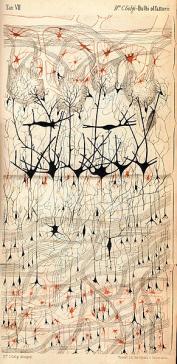The nerves and nervous system—the brain, spinal cord, motor nerves, and sensory nerves—are special objects in the history of science and medicine. From the ancient world to the present, physicians, philosophers, and neuroscientists have recognized the nerves both as objects of scientific inquiry and as instruments of scientific knowledge building and scientific practice. Although the understanding of nerves has changed considerably over time—from hollow tubes, to fibers, to cells, to systems—nerves have remained an enduring scientific object that shows, both physically and conceptually, the basic units and structures that give rise to the first-person experience necessary for scientific knowledge of the world. The history of the nerves, in other words, is a history of scientific epistemology itself.
This working group asks how nerves have been experienced and understood as instruments of scientific knowledge and practice, necessary for perception, memory, and understanding, and how they have been defined as objects of scientific study and description—as material structures, functions, and epistemic images, models, and objects.

